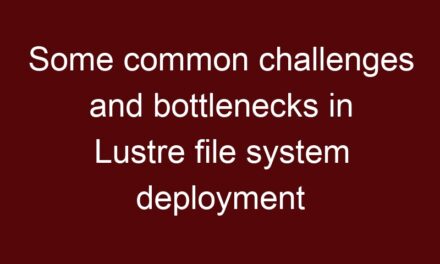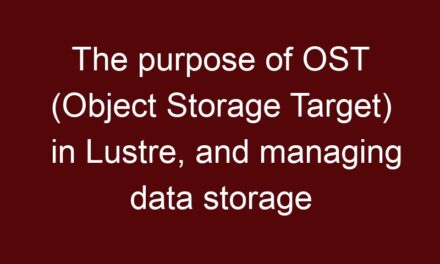The architecture of Lustre is based on a distributed, parallel design that allows for high scalability and performance in large-scale storage environments. The Lustre file system is built on the client-server model and comprises several key components. Here is an overview of the Lustre architecture and its primary components:
- Clients: Clients are the nodes in the Lustre file system that access and use the shared file system. Clients can be individual compute nodes or servers in a high-performance computing cluster. They run the Lustre client software, which communicates with the Metadata Server (MDS) and Object Storage Targets (OSTs) to read and write data.
- Metadata Server (MDS): The MDS is responsible for managing file system metadata, such as file attributes, directory structures, and access control information. It maintains the metadata in a distributed manner to avoid bottlenecks and single points of failure. The MDS handles metadata requests from clients and ensures data consistency across the file system.
- Object Storage Targets (OSTs): OSTs are responsible for storing the actual file data in Lustre. Each OST is a storage server with one or more physical storage devices. The data is distributed across OSTs using striping to achieve high I/O performance. Clients communicate directly with OSTs for data read and write operations.
- Object Storage Servers (OSSs): OSSs are the servers that manage the Object Storage Targets (OSTs). OSSs handle the data requests from the clients and distribute data across OSTs using striping. They are responsible for managing data placement and load balancing to achieve optimal performance.
- Lustre Network: Lustre relies on a dedicated network for communication between clients, MDSs, and OSSs. This network is typically a high-speed low-latency interconnect, such as InfiniBand or Ethernet with Remote Direct Memory Access (RDMA) capabilities, to ensure efficient data transfer and reduce network overhead.
- Network File System (NFS) Gateway: Lustre can also be accessed via NFS, which allows non-Lustre clients to access the Lustre file system. The NFS Gateway provides this interface, enabling standard NFS clients to read and write data to Lustre, making it more accessible to a broader range of systems.
- Lustre Management Server (LMS): The LMS is responsible for managing and coordinating Lustre file system configurations and policies. It provides tools and utilities to configure and monitor the Lustre file system, making administration easier.
- Distributed Lock Manager (DLM): The DLM is a critical component in Lustre that provides distributed locking functionality. It enables clients to coordinate access to shared files and avoid conflicts during concurrent read and write operations.
The Lustre architecture allows for horizontal scalability, meaning that the file system can expand to include more clients, MDSs, and OSTs to meet increasing demands for storage and performance. By distributing data and metadata across multiple servers, Lustre achieves high performance, fault tolerance, and load balancing, making it suitable for high-performance computing, big data analytics, and other data-intensive applications.





